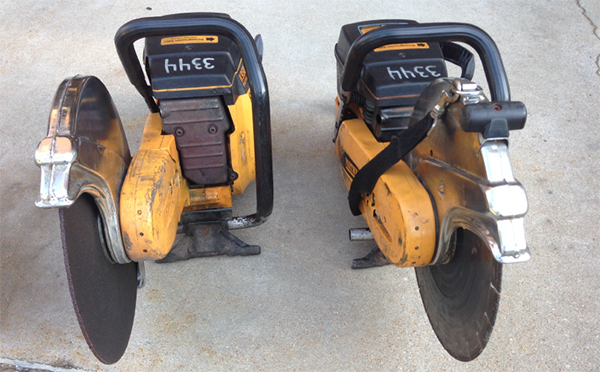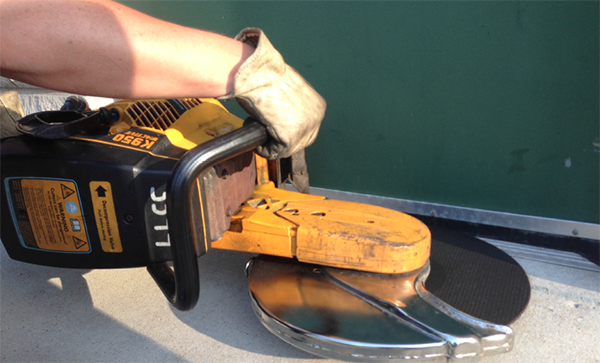
By Brian Zaitz
The rotary saw is one of the most versatile saws used in the fire service. With a compliment of blades, the saw can cut through almost any material, from metal to masonry to wood.
When operating the saw, always ensure you wear full personal protective equipment; the ctting of the material will throw sparks, dust, and debris as the blade makes it cut. When beginning to use the saw, throttle the saw to full revolutions per minute (rpm); this will provide full power to the blade prior to engaging the material. Plunge the saw into the materia, but only to the depth of the material to be cut. For example, when cutting a metal roof, only cut the sheeting, not the roof joists. When cutting, pull the saw toward you. Never push the saw away; pulling the saw allows for the normal rotation of the blade to work to your advantage.

When setting up your saw, match the blade to your material with a variety of blades including multipurpose blades rotary saws to provide a variety of cutting options.
As with any tool, match it to your response, i.e., the blade should match the most common material you will cut. In addition, make sure that the blade matches the saw; this sounds simple, but saw blades come in a variety of sizes, materials, and rpm ratings. Also, always compare the rpm rating on the saw to the blade you are going to use to make sure it’s compatible.

There are also options with the blade mount (traditional and outboard). The outboard provides for the saw to be used for flush cuts. If you chose this option, make sure you practice using the rotary saw; it will change its feel and handle. As with any fire service tool, the key is to understand it, practice with it, and match it to your response.
Download this drill as a PDF HERE
Brian Zaitz is a 14-year student of the fire service, currently assigned as the captain/training officer with the Metro West (MO) Fire Protection District. Brian is an instructor with Engine House Training, LLC as well as instructor at the St. Louis County Fire Academy. Brian holds several degrees, including an associates in paramedic technology, a bachelors in fire science management, and a masters in human resource development. Brian is currently and accredited chief training officer and student of the National Fire Academy’s Executive Fire Officer Program.
MORE THROW BACK TO BASICS
-
Air Bags
- Ground Ladder Markings
- Riding Assignments
- SCBA Check
- Catching a Hydrant
- Forcible Entry for the Lone Firefighter
- Forcible Entry: Inward-Swinging Door
- Hoselines
RELATED FIREFIGHTER TRAINING
- Training Minutes: Ladder Work
- Drill of the Week: Ground Ladder Carry & Raise
- Are You Ground Ladder Savvy? Part 1
- Are You Ground Ladder Savvy? Part 2
- GROUND LADDER PLACEMENT
- Drill of the Week: Ground Ladder Placement
- Drill of the Week: Selecting the Correct Ground Ladder
- Ground Ladders: Basic Knowledge
- DETERMINING TARGET HEIGHTS FOR GROUND LADDERS: THE CLICK SYSTEM
- Boston’s Ladder Culture

